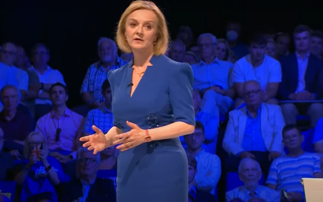Central banks are at a crossroads, and if they carry on, maybe a dead end. The good news, though, is twofold.
Central bankers recognise the need to reassess their frameworks and they are coming at it from a point of strength: unemployment at multi-decade lows in most of the developed world.
The problems have become readily apparent. First, the conventional framework in place today - flexible inflation targeting - aims to target a variable over which central banks very evidently have limited control. Japan provides the most extreme example.
The Bank of Japan (BoJ) has expanded the monetary base by over 400 trillion yen (or approximately $4trn) in the past seven years, which is equivalent to 100% of GDP. Rather than prices surging, the result has been an average inflation rate of just 0.7% per annum (0.3% excluding food and energy), which is consistently well below the stated objective of 2%.
BMO GAM FundWatch: Central bank 'comfort blanket' helps fund performance
Would the outcome have been meaningfully different if the dosage had been 200trn yen, 400trn yen or 800trn yen? It is worth thinking about.
Either central banks have been far too timid in their approach, or other factors out of their control exert at least as much influence over inflation. The roles of technology, demographics and the nature of competition come to mind; in which case, a precisely specified level of inflation is the wrong target.
Secondly, the conventional economic framework used by central banks is not working. In one of her last (and most fascinating) speeches as US Federal Reserve chair, Janet Yellen indicated as much. The model essentially relies on the concept of an output gap, as defined by a measure of full employment and the role of inflation expectations in determining future inflation.
On the concept of the level of unemployment that generates higher future inflation, the Fed has been completely wrong, as current chair Jerome Powell admitted to congresswoman Ocasio-Cortez only this month. Has the Fed been wrong about the calibration - or about the process by which inflation is generated?
The Kiwi question: Have central banks learned nothing since 2008?
Similarly, in today's economy the role of inflation expectations - as typically analysed - appears confused and outdated, a relic of models designed in the 1970s and 1980s when inflation was in the double-digits.
Bank of England MPC member Silvia Tenreyro remarked in a recent speech that "if households expect prices to rise more, that increases their incentive to spend today rather than saving". Is that really how households behave? It seems very unlikely at today's low levels of inflation, even if it was the case 40 years ago.
We are lucky in most developed markets today. Greenspan's definition of price stability has been reached - inflation is too low to be noticed and most households (or indeed businesses) make spending and savings decisions with little regard to it.
People respond to relative price changes between goods and services, which in a low inflation regime, dwarf changes in the aggregate price level. In the modern developed world, expected inflation is noise.













